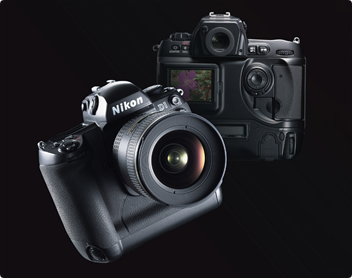Superb Image Quality, High Speed and Easy to Use
Superb Image Quality — What does this mean in photography?
Digital cameras swept away film cameras in a very short time. What was the greatest change when film cameras were replaced by digital?

Nikon launched its D1 digital SLR camera in 1999. When designing this product, senior developers came up with the catchphrase Superb Image Quality, High Speed and Easy to Use. It was an easy idea for anyone to understand. In fact, this phrase, which so beautifully represented the character of our digital cameras, was remarkably apt and to the point.
It sounds like such a common phrase to us. What’s unique about it?
High Speed and Easy to Use are features we expected from any film camera. The performance was easy to compare in terms of numbers and specifications. What was epoch-making was the phrase Superb Image Quality. With film cameras, the photographic results were very much dependent not only on filmmakers, but also on photo laboratories. Nikon, as a camera maker, played no role at those stages. All that was asked of a camera maker was to provide the hardware — a camera — that would assure the correct shutter timing and reliable performance for photographic operation. When digital cameras came along, however, it became the hardware that suddenly delivered the end-results of photography, whether the image quality was high or not.
It’s impossible to be objective when judging whether a photo is of superior image quality or not.
You’re absolutely right. There’s a difference between what a professional photographer calls superior image quality, and what an amateur perceives as such. The evaluation of a specific picture can vary greatly from one person to another. Hopefully, our cameras are supposed to be able to satisfy all of our users’ requests. Digital cameras aren’t yet good enough to fulfill every user’s criteria for superior image quality. In some respects, digital cameras haven’t yet attained the power of expression of film cameras.
What specific efforts do you make toward achieving photography that will be regarded as Superb Image Quality by everyone?
I get out of the laboratory as much as possible, and recommend this to other members of my team, too. This is because it is vital for each of us to develop the clearest understanding of what Superb Image Quality really means. I take advantage of every possible opportunity to listen to the opinions of customers. I visit photo exhibitions, gatherings of professional photographers, and events where amateur photographers get together as often as possible.
100 definitions of Superb for 100 users
Can you recall any examples of customers’ words that have left an impression on you?
One recent example is something I heard from a professional photographer at a racecar circuit. Wrapped up in the excitement of the moment, he said of his Nikon D3, "I’ve got a perfect focus on the blood vessels of the driver’s eyeballs." Well, in the old days, the conventional procedure with a camera was to depress the shutter when the racing car reached a predetermined point. Now, the camera is provided with an autofocus function that enables the photographer to track the car, constantly keeping it in focus all the way round the circuit. The autofocus responsible for such a mission requires a highly sensitive tracking capability. In times gone by, it was said that Nikon didn’t perform as well at photographing sports events. I knew that we had paid special attention to improving the autofocus function of the D3. But I was very impressed with what this photographer had done in capturing the racer’s facial expression so closely. The Nikon D3 had satisfied the demands of this professional photographer to a level far beyond his expectations.
Do you have any other good examples, perhaps from a non-professional photographer?
What I constantly notice in photography is that tastes differ from person to person. Generally speaking, professionals demand that their renditions be as faithful as possible to the target subject. With amateurs, however, this isn’t necessarily true. They often prefer blue skies, even when the weather is actually cloudy; and they want their tints to be bluer or greener than they are in reality. There are a great many people who prefer their photography this way. Certain functions are required to change cloudy skies to blue ones. To satisfy such requests, cameras must incorporate the necessary tools. In other words, for every 100 individual users, there are 100 differing definitions of Superb. Camera makers are asked to incorporate all of these individual tastes into a single camera. So before we design a new camera, we need to fully understand these 100 different definitions.
